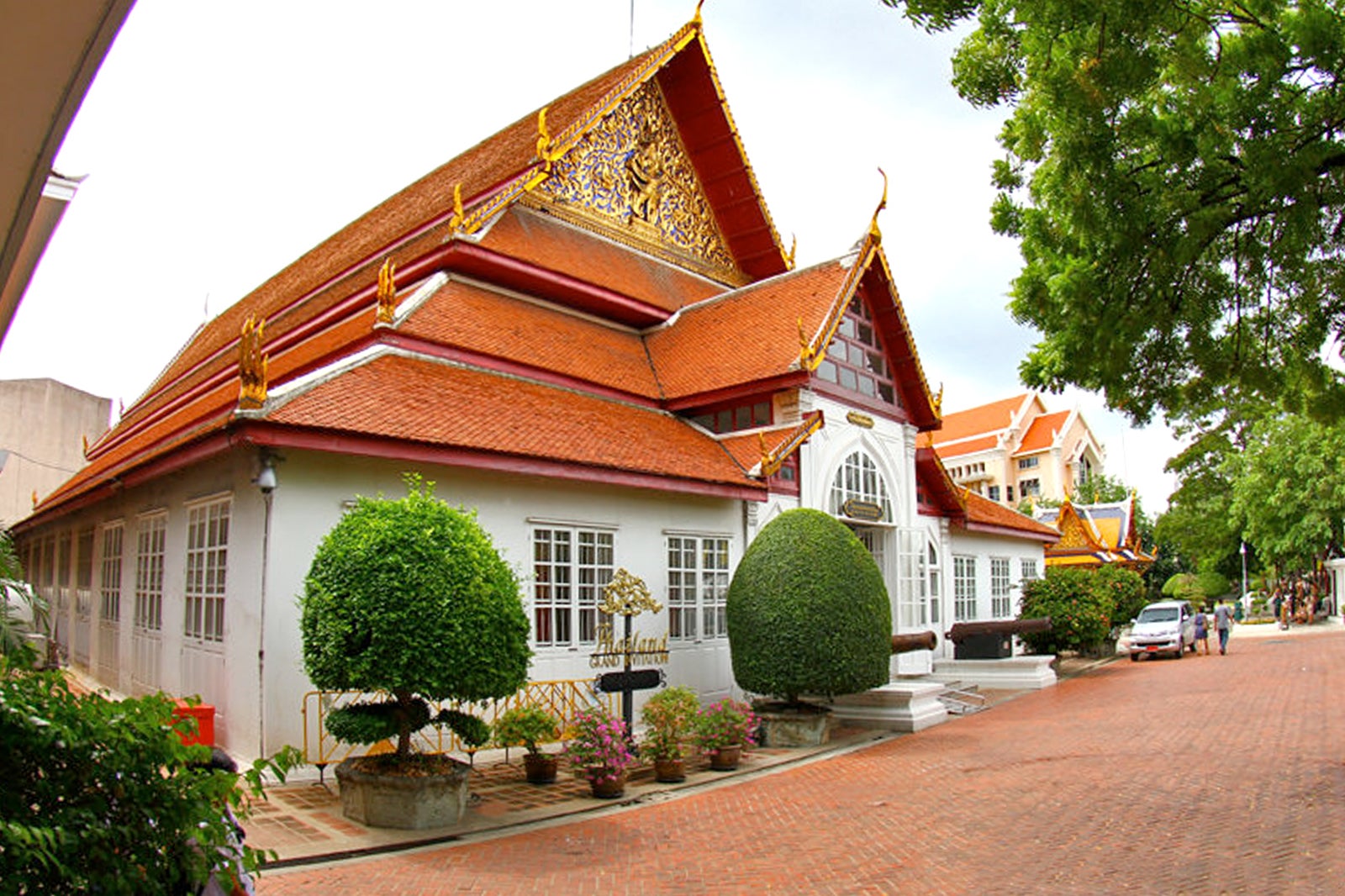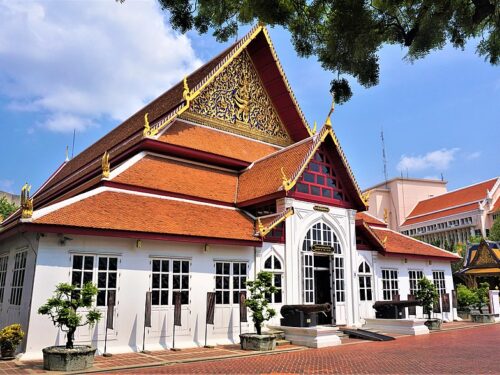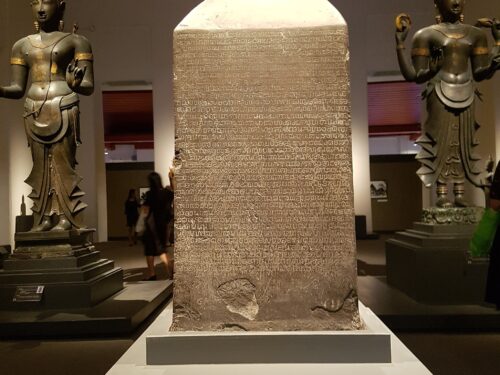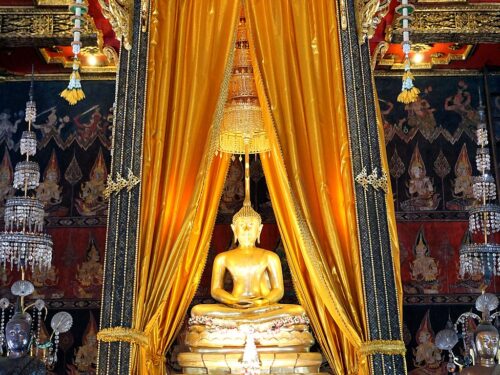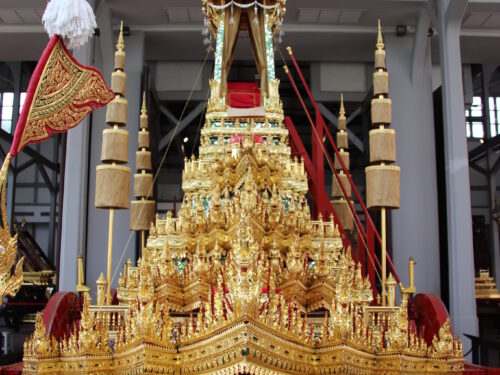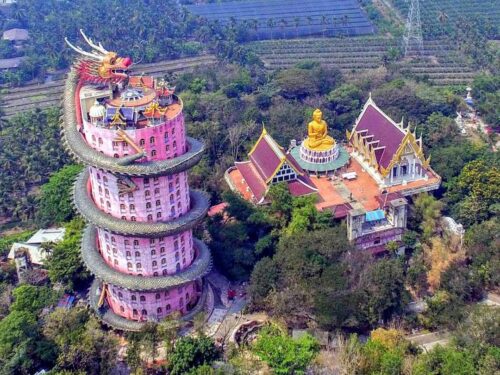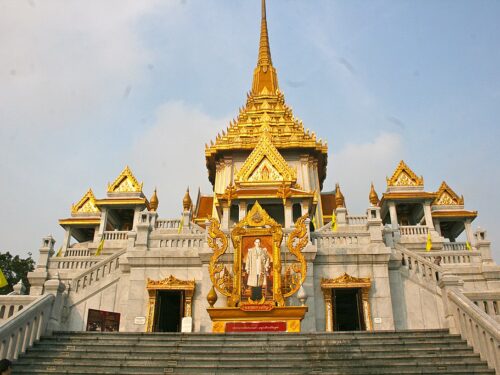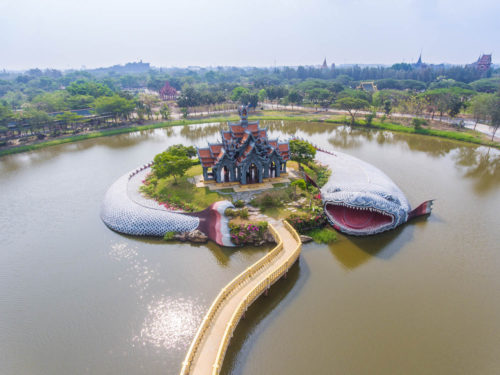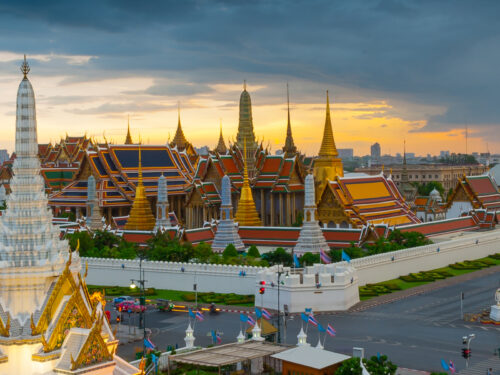The Bangkok National Museum
If you are interested in the culture and the life of Thailanders in different periods, the Bangkok National Museum is a destination that you must include in your trip to Bangkok.
The Bangkok National Museum is considered one of Southeast Asia’s largest museums, which displays Thailand’s biggest collection of local art and artifacts. It’s not far from the museum to Wat Phra Kaew and The Grand Palace, so you can visit all of these spots in a day
History of the Bangkok National Museum
The museum conserves not only the precious treasure, but its history is also a sacred piece of Thailand’s culture.
Initially, King Rama IV established the royal private museum in the Grand Palace to house his private antique collections. When King Rama V took charge, he ordered to open the museum to the public for the first time at his 21st birthday celebration on 19 September 1874.
In 1887, King Rama V ordered the museum moved from Concordia to the Front Palace and called it “Wang Na Museum” or “Front Palace Museum”.
In 1926, it was named the “Bangkok Museum”. In 1934, when it came under the direction of the Fine Arts Department, it developed into the Bangkok National Museum that we know nowadays, marking the birth of the first National Museum in Thailand.
Description of the Bangkok National Museum
The Bangkok National Museum will walk you through Thailand’s rich history and tell various stories about this spiritual country.
Thanks to this heritage, people can get acquainted with the cultural development of Thai people from the Bronze Age until the end of the XVIII century. Some of the oldest items displayed in the museum even date back to prehistoric times with pottery from Ban Chiang. Visitors will also see a wide array of religious items from across the eras, with statues of Buddha, Ganesh as well as Vishnu prominent. Here are some highlights to check out at the National Museum.
King Ramkhamhaeng’s first inscription
The famous stone monument was reportedly discovered in Sukhothai in the 1830s by King Rama IV, who was a prince at the time. The stone has an inscription from King Ramkhamhaeng who ruled the ancient kingdom of Sukhothai during the 13th century. Trusted as a benevolent and wise ruler, King Ramkhamhaeng is sometimes referred to as the “Father of the Thai Language” for his role in developing the Thai alphabet and the system of writing.
Phra Phuttha Sihing Buddha image
Despite being quite small in size, the story behind the Phra Singh statue is long and complicated. The original Phra Singh image is believed to have first appeared in Sri Lanka in the second century, but its precise age and origin remain unclear. Furthermore, there are at least three Phra Singh statues in Thailand, each claiming to be the original.
Royal funeral chariots
The chariots used in royal funeral ceremonies are kept at the Royal Chariot Garage at the Bangkok National Museum. More than 200 years old, sophisticated chariots have been used during royal cremation ceremonies since the start of the Chakri Dynasty.
Apart from the highlights, at this extraordinary place, many people will see for the first time the unique plates, specially ornamented with hollow symbols and even conjurations which were used to protect the battle elephants. It was also a kind of talisman bringing luck to the warrior. You may also see the ancient funeral stretchers used during the funeral ceremony of the previous rulers. Even the theatrical costumes and the props of the court royal artists are shown in the museum. Visiting this destination will give you a completely immersive experience of Thai culture and architecture.
Attention when going to the Bangkok National Museum
There are several things visitors should notice when visiting the Bangkok National Museum.
First of all, photography is allowed inside the galleries and in outdoor areas of the museum but using flash is restricted.
Visitors must check any large bags they carry when entering the galleries for security reasons.
There are some buildings within the complex where visitors are required to remove their shoes when entering. For this reason, it is highly recommended that you wear comfortable shoes that can be easily removed.
Tickets and other practicalities
The tickets cost 200 Baht for each foreigner and 30 Baht for Thai citizens.
Students, senior citizens older than 60 years old, ICOM ICOMOS members, monks, novices, and priests of other religions are exempted from the entrance fee.
Bangkok National Museum is open every Wed-Sun from 9 AM until 4 PM. Tickets won’t be sold after 3:30 PM.
The museum is normally closed on national holidays.
How to get there
Visitors can walk from The Grand Palace or take the buses to the Bangkok National Museum that we listed below
Bus no. 3 6 9 19 30 33 43 53 59 64 65 70 80 82 91 123 124 201 503 506 507,
Air-conditioned bus no. 3, 6, 7, 38, 39, 80, 82, 91
Airport Shuttle Bus no. 2
You may also like:
French version of this article:
